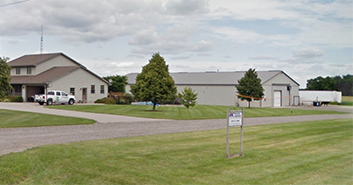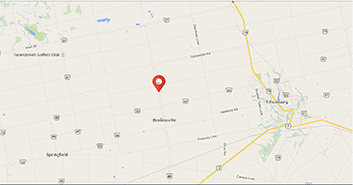Powder coating is a procedure where you clean the item, sand blast it to give it a profile for adhesion, and then apply a chemical pre-treatment for protection. Once the color is chosen, the powder is then applied to the metal. The item is then put in a cure oven for a certain amount of time at a specified temperature. In the oven the powder flows into a liquid form and is cured into a hard protective coating. As soon as the item cools it is ready to be put in use.
Find answers to your questions here.
Powder coating is justifiably superior to wet spray in so many ways. It's generally less expensive because the process is quicker.
Powder coating is not subject to the extra time it takes to set up and break down from a wet spray product. Further, the thermal bonding process makes for a much more durable finish than wet spray. Powder coating is also more environmentally friendly than wet spray because it does not involve the potentially harmful chemicals used in a wet spray product. No Volitile Organic Compounds are emitted.
Powder coating is resistant to chipping, scratching, and fading. Powder coating finishes last much longer and are more durable than liquid paint. Powder coating is electro static, therefore, it wraps around the piece you are powder coating and covers edge to edge with no possiblities of runs or drips.
Although powder coating is relatively new to some markets, the process has been around for approximately 50 years. It has been the number one finish choice of many manufacturers in a wide range of industries for many years.
Powder coating finishes can be found on motorcycles, automobile parts and frames, agricultural equipment, garden equipment, aviation parts and recreation equipment including bicycles, boats, recreational vehicles, ATV’s and golf equipment, etc. A superior finish combined with durability greatly reduces required maintenance and extends the life of any coated product thus making powder coating the right choice.
Yes. If you receive the parts and reject them due to a paint issue that was caused by us, we will repaint. Parts that are too light, too heavy, chipped, scratched or damaged upon your receipt can be repainted at no charge. However, if a painted part is brought back months later to be reworked there will be a charge. Discrepant parts will only be repainted if we were notified immediately upon your receipt.
Rough handling, improper storage and poor condition of raw parts can cause rejects for which we cannot be responsible.
The bottom line is if the error rests on our shoulders we will gladly repaint the parts and do whatever we can to address the problem to satisfy your needs. Discrepant parts detected upon delivery must be reported to us immediately. Ontario Coatings reserves the right to validate all claims, but we will not charge you to correct our own mistakes.
EVERY JOB IS DIFFERENT. Weight, size, masking and plugging requirements to protect specified areas all determine the cost. We will quote your job before we begin to work on it and stand behind our quote.
No. Some colors are more expensive due to their availability or simply because of the supplier. Stock colors are naturally less expensive than powder that must be special-ordered or powders that are hard to locate. Some other powders are higher-priced simply because of their properties, such as textured or luminescent powders.
We strive to deliver the service that you require when you want it; it's our policy. Getting your parts done right and on time is always our top priority.
The best way is to bring your part to us for evaluation. However, if that is not feasible you may contact us via email at: oc@ontariocoatings.com. An attached photo with measurements is always helpful.
To have a clear coat added typically costs 50% more than what the job was originally quoted.
Two factors are involved in making the powder stick. First, each part is cleaned in on our three stage pretreatment washer. This removes grease, dirt and anything else that might interfere with the painting process. During its’ travel through the process an iron phosphate coating is also applied to the part, which will enhance the adhesion process.
Once the part has been cleaned and has been through our dry off oven it moves to our environmental clean room where it will be painted. The powder is charged via an electrostatic process, while the part itself is attached to a grounding hook. This causes the powder to cling to the metal throughout the baking process.
After the parts are coated with powder, it is crucial to properly bake them within a proper temperature range. The heat in the oven will cause the powder to melt and form a plastic sheet around the part. At this point, the powder bonds not only to itself but to the part as well. This process gives the paint its increased durability and professional finish.
If the parts are not baked properly, the powder will not bond properly. This creates a weakness in the powder itself, which can make the parts vulnerable to chipping.
We ensure that every part receives the proper attention. The temperature of our oven is carefully regulated to keep the bonding process at its maximum level of efficiency.
The oven temperature is low enough to avoid any metal fatigue. However, any material that is not metal and cannot withstand a temperature of 425 degrees F may be damaged. It is your responsibility to ensure that no material that cannot meet this requirement is not present. An example of this is lawn furniture that has plastic bumpers on the bottom of the legs.
Many parts that come to us DO need blasting before being coated. However, if a part is new, clean, and has no mill scale or corrosion of any kind, we can coat it without any blasting.
Powder coating will not hide or remove the imperfections on your item. Your part must be dent and scratch free to have a smooth and clean finish. However, rough texture powders will cover up some imperfections.
The advantages of having an item clear coated is that it gives it a second layer of protection, including UV protection from fading. You should use a clear coat on anything that is exposed to elements that could make your part fade.
Yes. But if there is wet paint on the part, we will be unable to bring a static charge to the metal. Because of this, most parts require stripping or sandblasting to remove old paint. In order to ensure quality, we recommend that only freshly manufactured parts be sent in.
Yes. Frequently the parts we coat have critical surfaces that must not be contaminated with coating. We purchase and design mask materials that will ensure coatings are applied only where required.
Most rust can be removed from sand blasting, but depending how bad the rust is. The final finished might not be as smooth due to pitting.
We have techniques of using silicone plugs and high heat tape to protect any threaded area.
If you are uncertain about which color you want to go with, we can provide a few samples to help you with your decision.
There are over 6,000 colors and many textures in powder coating. Powder coating offers candy, metallic, high, medium, and low gloss as well as textured. With powder coating we can achieve the color and/or texture you want or need.
As a general rule, no. However, if your parts have components that are heat sensitive, you will need to remove those components.
Our docks open at 6 AM, and close at 3:30 PM, Mon – Thurs. Others hours by appointment.
You certainly can courier them or you can drop them off yourself.
We accept cash, ETF and personal cheque. For on-going and repeat customers we will set up a Net 30 Day Account.
We are located at 292744 Culloden Line, Brownsville, Ontario, N0L 1C0. Our shop is approximately 10kms south of the 401. Please see our map on the contact page for location directions.
Can't find answer?
Contact us and we'll try to answer your questions and concerns.





